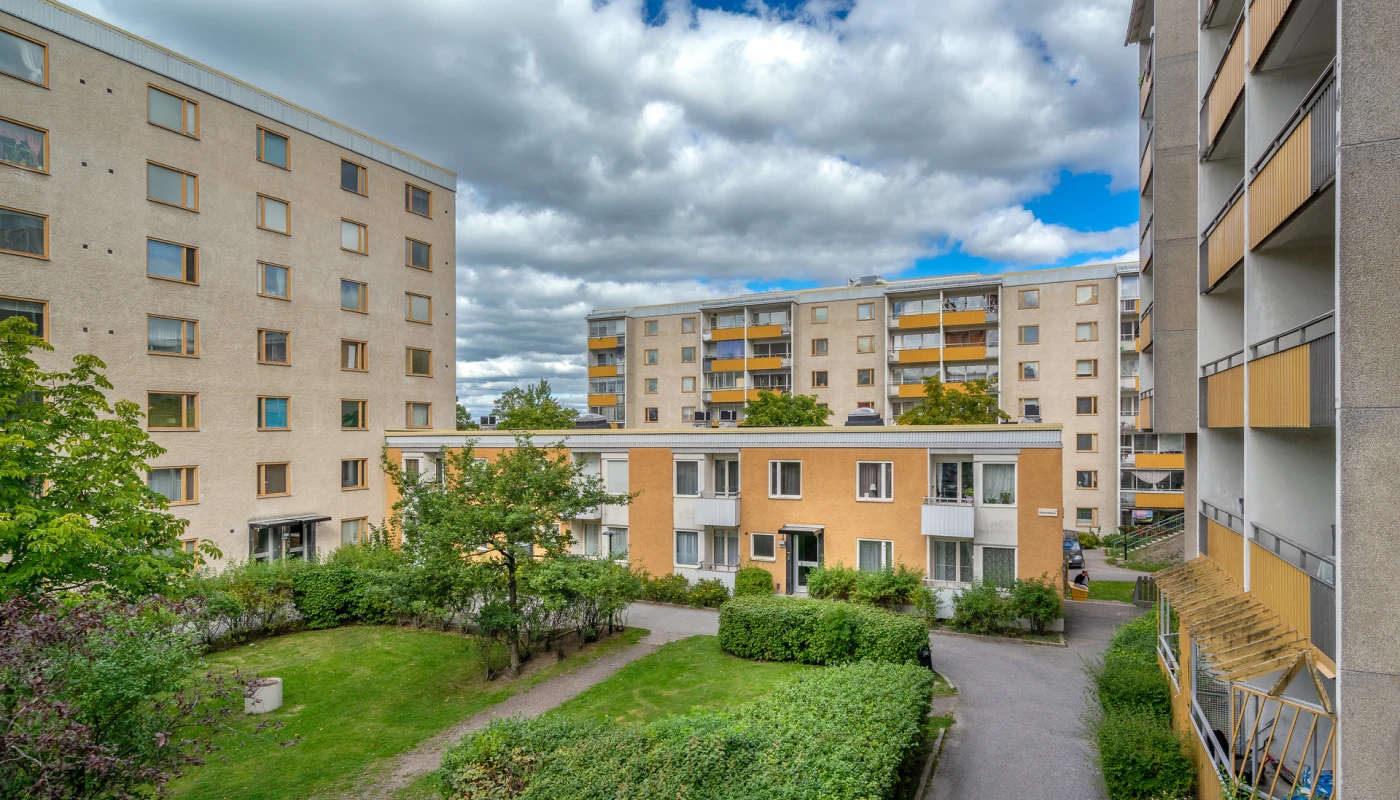Victoriahem owns properties from Trelleborg in the south to Uppsala in the north, most built in the 1960s and 70s. They are usually properties with development potential that they see as an opportunity to improve.
"Many buildings also have high energy consumption, which means that we see great potential to reduce energy use," says Dan Mårtensson, Head of Property Development at Victoriahem.
On track with energy targets and sustainability goals
Edge
Since 2015, the company has used digital tools (Edge) to control heating in its property portfolio. This has improved energy efficiency, and the tool helps the company achieve its sustainability goals.
The company is on track with its current targets and compares well with its real estate peers. An update and clarification of the targets is currently underway to continue the work on reducing CO₂ emissions, among other things.
"One of our current targets is to reduce the amount of purchased energy for building operations by 30% by 2030 (from 2015 levels). At the end of 2024, we were at a reduction of around 26%. We are also working to reduce water consumption and are making good progress towards our targets there, too," says Dan Mårtensson.
New EU targets for building management
One of the challenges in sustainability work is to focus correctly and make important choices based on financial limitations. The new requirements in EU directives, such as the Energy Performance of Buildings Directive (EPBD), mean that you must be able to prioritize correctly and analyze how far to invest in energy efficiency improvements.
"We will have to wait and see what the final EPBD requirements will be, but we will be faced with decisions to invest to reach the nearest requirements in 2030 and 2035 or even make larger investments to reach the 2050 requirements directly."
EU directives and taxonomy also influence the sustainability strategy.
We are currently focusing a lot on investing in taxonomy measures that reduce energy use and CO2 emissions. In the current rising energy prices, these investments are economically and environmentally beneficial. At the same time, we are working to prepare and interpret the various directives and rules that are coming, which is sometimes complex.
Meeting the upcoming EU directives is challenging, partly because of interpreting the directives and because of ensuring that you have relevant and reliable data to report. When it comes to energy use, Victoriahem has good follow-up via the technical building systems they use.
"We are working on collecting data for several areas of CSRD reporting. Collecting and validating data takes time, but it is necessary as the demands for transparency in reporting increase."
A proven solution
In a new report produced by the independent organization The Carbon Trust and the telecom company Ericsson, the actual effects of using AI to control energy use have been analyzed. Parts of Victoriahem's portfolio are included in the data.
Data material:
According to the report entitled Case Study on the Avoided Emissions from a Building Heating Management System Using an AI Steering Function, the AI steering function has a net positive effect, reducing greenhouse gas emissions. The study shows that average energy consumption is reduced by 7%, and CO2 emissions are reduced by 6% compared to the reference scenario.
"Seeing concrete results that confirm the impact of our investments and tools is very positive. This serves as proof that we are taking the right approach. Additionally, it confirms that our efforts in building energy optimization are leading to real improvements," says Dan Mårtensson with satisfaction.

Digitization vs. physical presence
Much of the work managers have to deal with today is technology-related. Digitization and AI make the work easier, but the challenge still lies in correctly prioritizing a complex everyday life with many balls in the air, according to Dan Mårtensson.
He emphasizes that it will be even more critical in the future to weigh digitization against physical presence.
"Managers will need to manage digital systems while setting the right priorities. They must also be able to build trust with tenants and work closely with them. The manager's role involves high commitment and responsibility to strike this balance."
His role as a real estate development manager means he needs to consider business investments that increase revenue and reduce costs while ensuring the company takes care of the maintenance and long-term improvements of their buildings.
"Reports, such as the one we have now received where The Carbon Trust, as an independent actor, has looked at data from our buildings, are important to confirm that we are on the right track and to be able to set new goals. It is also a good way to make our work visible internally and externally. We have made great progress, but there is still potential to get even better in energy optimization and our overall property development work," concludes Dan Mårtensson.
Energy optimization: Saving energy and decarbonizing residential homes
Ericsson has produced a report together with the Carbon Trust, in which a case study demonstrates the impact of our Edge service and its Artificial Intelligence (AI) control function on energy consumption for heating buildings.